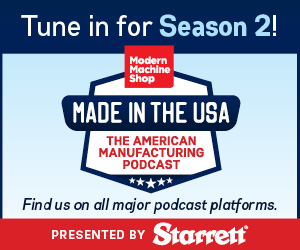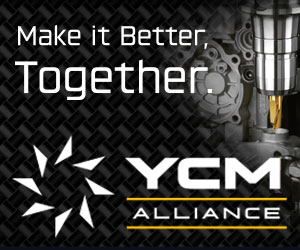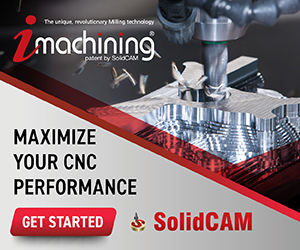The New Rules of Cutting Tools — Rule #5: Consider the Cutting Tool at the Start
Sponsored ContentAre you specifying the right machine? You can’t know until you know what tools you will use.
Share
Jim Grimes, product manager of machine investments for Sandvik Coromant, points out that it’s not just important what tool you choose. It’s also important when you choose that tool. The best time to consider high-performance tooling is at the very beginning of the analysis related to any new part or new job. What tooling you will use for this job should be just as fundamental a question as what machine will you use.
Certainly you would never commit to tooling without choosing a machine. That would be absurd. For certain parts, it may not be clear at the outset whether a machining center or a lathe is the right choice, so obviously purchasing tooling at that point would be premature.
But shops make the opposite mistake all the time. They buy the machine tool first, then add tooling as an afterthought. This is almost as risky as buying the tooling without knowing the machine, because by the time the machine is bought, the shop may have locked itself into machine specifications and features that make it impossible to use productive tooling to its fullest advantage.
In other words, by not considering the cutting tools and the machine tool at the same time, the shop may rob itself of much of the savings it might have realized. In fact, the shop may even spend far too much on the machine tool, because the right tooling might have enabled the shop to get away with a lighter-duty or less expensive machine.
Here are just a few of the more specific reasons why cutting tools should be considered from the start:
Parameter Optimization
Knowing in advance what tools you will use to run a new part or a new family of parts will make it clear what spindle speed, feed rate, power and torque will be ideal for each one of those tools.
Equipped with this range, the shop can choose a machine tool that provides precisely those parameters.
Even better, the shop that identifies its needs this early may discover that only one tool requires the torque or power. That is, the shop may discover it can compromise on just one tool in order to get away with a significantly less powerful, less expensive machine.
Machine Features
Certain machine features are essential for taking advantage of some types of high-performance tooling. For example, some sophisticated tooling for turn-mill machines requires a positionable B-axis. The shop would not want to have to install this technology on the machine later.
An even better example is Sandvik Coromant’s CoroTurn HP tooling, which uses a focused stream of coolant to lift the chip away from the cut for faster speed and longer tool life. If the machine tool is not equipped with high-pressure coolant, then this benefit of CoroTurn HP cannot be realized.
Combining Tool Positions
Modular tooling can allow different milling and drilling tips to be quickly exchanged on a single tool body, potentially without having to re-measure the tool each time. If the shop knows that it is going to rely on modular tooling in this way, then it can specify a machining center with fewer positions in the tool magazine. Most of the tool positions can then be occupied by just the tools the machine will use all the time, while several modular tool bodies can accommodate all of the other cutting tool choices that the shop will use only occasionally.
Combining Operations
Some shops can even be too quick to assume that they need an extra machine.
A deep, critical bore can be an example of a feature that might seem to merit separate processing. The shop may assume it needs a rigid boring machine just for this feature, based on the guess that the lathe or machining center that does the rest of the machining will not provide a stable setup for this work.
But what about damped tooling? Sandvik Coromant has developed boring bars with internal damping technology that can counteract the vibrations on less rigid machines.
Not every shop is aware of technology innovations such as these, but they exist, and a knowledgeable tool supplier should know exactly when to apply them.
To repeat, engage the cutting tool supplier early on! Machine tool technology is advancing, but cutting tool technology is advancing even faster. The example of the damped tooling , along with the diamond tooling of Rule #3 and the machine capacity savings of Rule #1 (see www.mmsonline.com/articles/the-new-rules-of-cutting-tools), all offer variations on the same promise. That is: The new machine you are considering buying might be able to do more than you think. Leverage today’s advanced tooling to make the very best use of your new—or existing—machine.

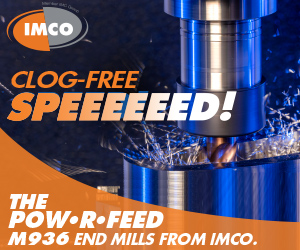
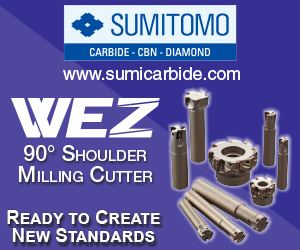
.png)
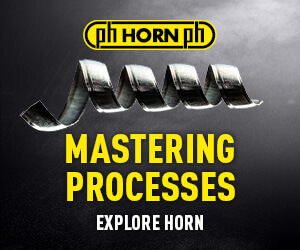






.jpg)



